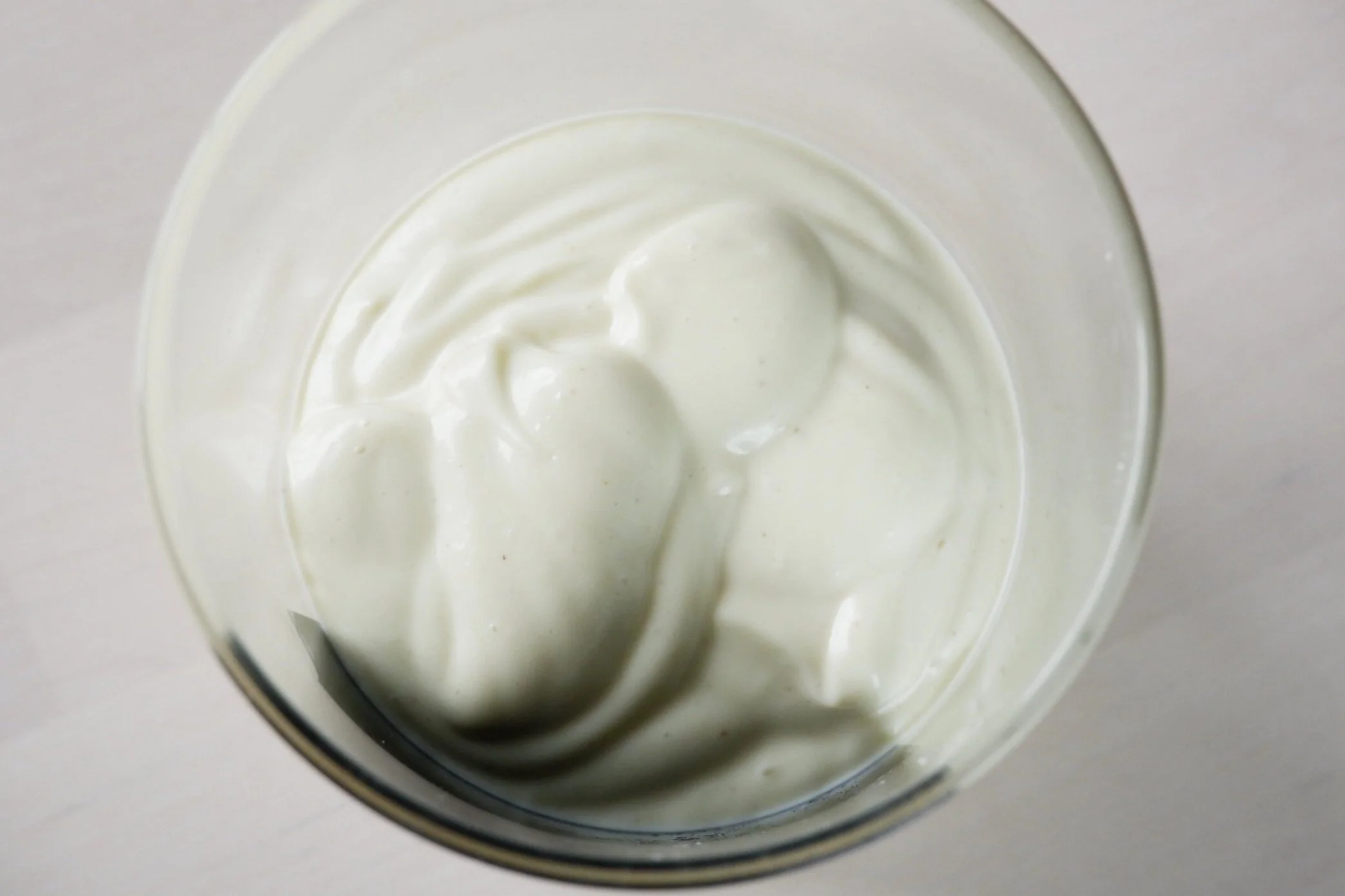What is aquafaba?
Just a bit of cloudy water that you chuck down the sink, or… the base of an egg free mayo, pancake or meringue? Learn why you need to pay attention to aquafaba here!
A faba-lous and “free” ingredient
Would you like to listen to the podcast version instead of reading this article? Find it here!
You may have discarded of aquafaba many times, without even thinking twice. And what a shame it is - as it can help you make vegan/egg free versions of great things like mayo, egg white based fluffy pancakes or even meringues! But what actually is aquafaba?
Aquafaba is the viscous liquid left behind after cooking legumes, most commonly chickpeas. The term itself is comes from the Latin words "aqua" (water) and "faba" (bean). It is typically found in canned chickpeas or can be obtained by boiling dried chickpeas at home.
At first glance, aquafaba may not appear to be anything special, but its unique composition makes it a great emulsifier, foaming agent, and thickener. That is why aquafaba can function as a remarkable substitute for egg whites in a variety of recipes (functionally, not nutritionally - more on that later!).
Also, I am of course a big fan of the reduced food waste as you repurpose something that would otherwise be discarded. We are all about more sustainable cooking practices, and using absolutely everything in the kitchen for a purpose!
It is worth noting that though we love having an egg free alternative that can function in the relatively unique way egg whites function, aquafaba does not carry any nutritional value of note. So in terms of protein and other good things you’d get from an egg, it’s is not a like for like. Hopefully you’ll get some good use out of the chickpeas or other legumes you drained it from though, as they will provide you with plenty of nutrition!
Culinary Uses of Aquafaba
A mere three tablespoons of aquafaba equate to approximately one egg, and two tablespoons can replace one egg white.
Here are a few popular applications of aquafaba:
Meringues and Macarons - When whipped, aquafaba forms stiff peaks similar to egg whites, allowing for light, airy meringues and delicate macarons.
Mayonnaise and Aioli - Aquafaba acts as an emulsifier, creating rich and creamy vegan mayonnaise or aioli without the need for eggs.
Cakes and Muffins - In baked goods, aquafaba enhances texture and moisture, resulting in tender cakes and muffins.
Cocktails - Aquafaba can be used in place of egg whites to create foamy, elegant cocktails such as whiskey sours.
Vegan Cheese and Butter - Blended aquafaba contributes to the creamy consistency of vegan cheeses and butters, improving their texture and spreadability.
Tips for Working with Aquafaba
To achieve the best results, ensure that the aquafaba is at room temperature before use, as this helps you achieve the desired consistency. If whipping aquafaba for meringues or similar recipes, adding a stabiliser such as cream of tartar can enhance stability and texture (a cheap and great addition to your kitchen cupboard anyway!).
Whether you are an experienced vegan cook or simply exploring new ingredients, aquafaba is a fascinating and practical ingredient to incorporate into your repertoire.
What are your thoughts on using aquafaba? Do you do it regularly, and if so - what do you make? Let me know in the comments below!
